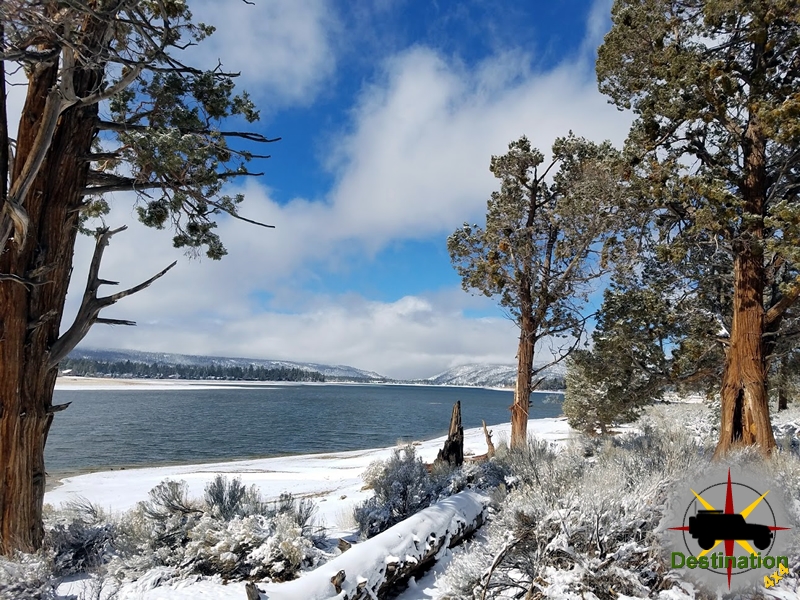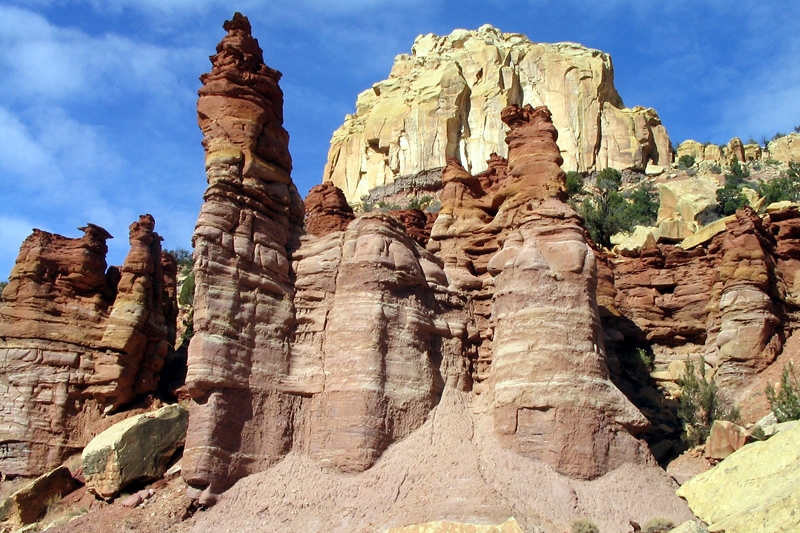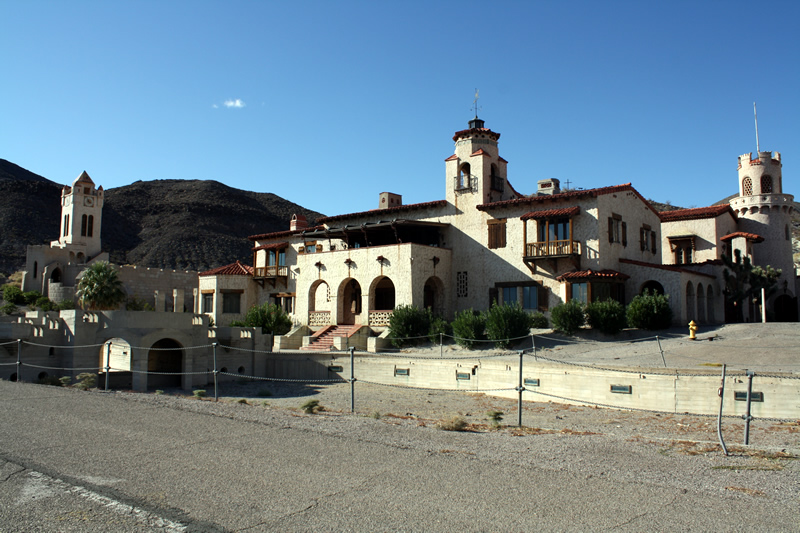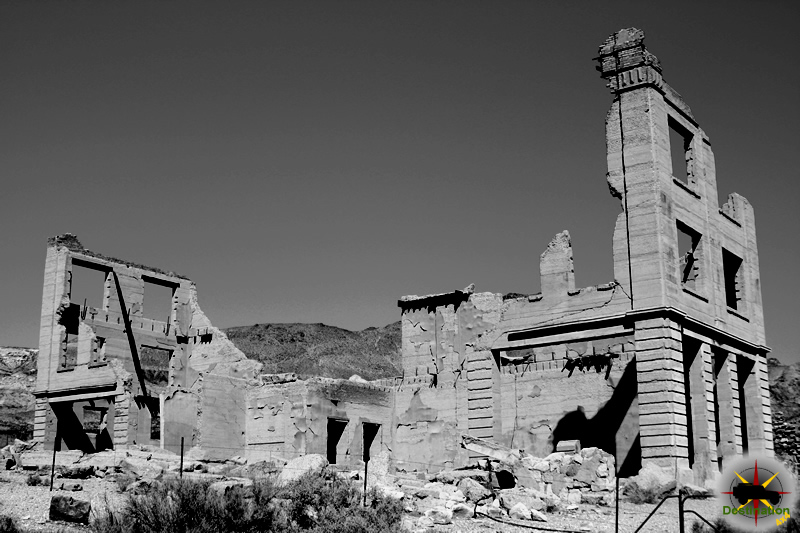
Christian Brevoort Zabriskie
Christian Brevoort Zabriskie was a vice president and general manager Pacific Coast Borax Company located in Death Valley National Park. Zabriske served the Pacific Coast Borax Company for some thirty six years, and due to this activity is honored by the naming an Zabriske Point.

Christian Brevoort Zabriskie (1864–1936) was born at Fort Bridger in the Wyoming Territory. After schooling, he worked for the Virginia & Truckee Railroad located in Carson City, Nevada. For a time, he relocated to Candelaria, Nevada at work for the Esmeralda County Bank. He briefly venture into the mortuary business with a partnership formed with a local cabinet maker. His lack of knowledge in the art of embalming was not considered a liability as burial speed was a huge priority.
In 1885, at the age of twenty one, Zabriske was hired by Francis Marion “Borax” Smith to supervise the Chinese laborer’s. These men worked for the Pacific Coast Borax Company is the Columbus Marsh located near Candelaria. During his thirty six year tenure with the Pacific Coast Borax Company, the company closed up Candelaria operations and relocated to Death Valley to increase production. The company also expanded into the Calico Mountains and Trona, California

Zabriske retired from the Pacific Coast Borax Company in 1933 as Vice President and General Manager. All of his work in Death Valley took place before the area was designated National Monument. He passed away just three years later, on February 8thm 1936 at the age of 71. He is buried in Carson City, Nevada.
Zabriske Point is named to honor the man for his many years of service to the Pacific Coast Borax Company.
References
John S Cook
John S Cook is the founder and builder of the Cook Bank Building which is located in Rhyolite, Nye County, Nevada. He is an example of many men, who followed the gold miners from town to town and profited off of mining operations. Today, the three story Cook Bank Building is the iconic visual representation of the town of Rhyolite.
He started his career in Tonopah, Nevada working as a cashier for George Nixon. Nixon and his partner George Wingfield invested in various mining operations in Goldfield
John Cook and his brother started the John S. Cook & Company Bank in Goldfield, Nevada in January 1905. His original bank was located in a wooden structure next to the Palace Saloon before relocating to the Nixon Block Building.
Later that same year he opened a new branch in Rhyolite. The Rhyolite banks first location was in a rented building on Main Street. After buying a lot on Golden Street in Rhyolite construction of the Cook Bank Building in the spring of 1907.
The panic of October 1907 caused Mr Cook to suffer his worst month as miners withdrew this money from his banks. Many miners considered saloons to be more trustworthy can banks, and saloons such as Richard Northern Saloon benefitted from the panic. Oddly enough, the saloon would then deposit the funds bank into the bank, undoubtably, keeping a small profit for themselves.

The John S. Cook bank was the only bank in Goldfield to survive and remain open. In 1909, George Wingfield purchase control of the Cook Bank from investing and bought out Cooks shares as well. John Cook next moved to North and worked in the Cook Bank located in Reno. In 1929 the stock market crashed caused the Great Depression and Wingfield’s banks failed and the John S. Cook banks were closed into history. John S. Cook later moved to Los Angeles, California and died on July 22, 1945.
References
Pete Aguereberry – A Panamint Valley Miner
Pete Aguereberry was a prospector and miner who operated around Death Valley National Park, for whom Aguereberry is named. Born in the Basque Region of France on Oct. 18, 1874, Jean Pierre “Pete” Aguereberry sailed to America with his fater in 1890.
Aguereberry struggled to learn the English while working an assortment of odd jobs to make a living. He worked as a handball player, sheepherder, cattle driver, milk truck driver, ice delivery man, ranch hand, and stage driver. A a stage driver he found his was to Goldfield, Nevada around 1902.
A few years later, he and fellow miner Frank “Shorty” Harris struck gold at Harrisburg Flats, 55 miles southeast of Lone Pine on July 1, 1905. Aguereberry worked the the northern edge of a ledge, while Harris worked the southern side. Within a month, over 20 different groups were working the area which later became Harrisburg. Aguereberry transformed that claim into the Eureka Mine, which he worked until his death on Nov. 23, 1945 at Tecopa Hot Springs at age 72.
Aguereberry is perhaps best known for the road he built to Aguereberry Point so visitors could enjoy its spectacular view of Death Valley.
Though he wished to be buried at the point in Death Valley, government officials, citing the 1933 monument status of Death Valley, denied his final request. Augereberry’s remains were buried in Lone Pine. A plaque in Lone Pine, California honors the life and memory of Pete Augereberry. Pete is remembered amount friends as a modest, hardworking, honorable man and a true legend of Death Valley.
References
Cook Bank Building
The Cook Bank Building is the most iconic image and popular images of the Rhyolite ghost town, in Nye County, Nevada. When John S. Cook built his bank to three stories, it inspired John Overbury to add a third floor to his Overbury building located just down Golden Street. The structure is centrally located in the remains of the town, and photographically, very interesting. Partially for this reason, the structure is a common choice for filming locations, and even appeared in an Alanis Morissette music video.

The Cook Bank is to most iconic building in Rhyolite and one of the most photographed ruins in Nevada.
John Cook and his brother started the John S. Cook & Company Bank in Goldfield, Nevada in January 1905. Later that same year the opened a new branch in Rhyolite. The banks first location was in a rented building on Main Street. After buying a lot on Golden Street, construction of the Cook Bank Building in the spring of 1907.
One of four banks in Rhyolite, the Cook Bank Building was by far the finest. Build of poured concrete, the building was three stories tall and had a basement that housed the Post Office. The interior was finished with marble staircases and mahogany accents. It also boasted modern conveniences such as electric lights and indoor plumbing
Despite its opulence, the Cook Bank was open less that two years. In the summer and fall of 1907, a financial crisis, often referred to as the Knickerboxer Crisis, caused banks across the country to go bankrupt. By 1910, the Cook Bank was closed and John Cook had sold off all of the building’s fixtures.
Since the closured of the Cook Bank, the building has appeared in many movies including: The Air Mail, The Arrogant, Cherry 2000, The island, Delusion, Ramona!, The Reward, Wanderer of the Wasteland, Six-string Samurai, Rough Rider’s Round Up, Bone Dry, Ultraviolet and more..
BLM Plaque – Rhyolite, Nevada

Cook Bank Building Map
References
Porter Brothers Store
The Porter Brothers store is a ruined storefront on the main street in the ghost town of Rhyolite, Nye County, Nevada. The Porter Brothers were like many other merchants, following and chasing the latest news of gold strikes and boom towns. The Porter Brothers built their building in 1906 at a cost of $10,000 and it close four years later, in 1910.

Like many merchants of the time, the Porter Brothers, Hiram and Lyman, moved from mining camp to mining camp, following reports of booms and strikes.
In 1902, the opened a painting business in San Francisco. Following the rich gold strikes in southern California, they opened mercantiles in Johannesburg, Ballarat (near Death Valley), Beatty, and, or course, Rhyolite.
Originally, the brothers bought lot on Main Street in 1905 and operated out of a canvas tent, but they soon ran out of room. They then bought a second lot on Golden Street, next of many of Rhyolites important commercial buildings.
Construction of their new building began in 1906. It used local stone and took four months at a cost of $10,000.
Before moving their operations from Main to Golden, they threw a huge three-day sale and held a public date, complete with an orchestra, in the new finished Golden Street building.
The Porter Brothers Store was very popular. In 1906, it was the go-to destination for Christmas shopping. This was due to its amazing displays that rivalled those of the major cities. In fact, the store was the largest employer in Rhyolite aside from the mines.
Unfortunately, even the popular store was not immune to the downturn that would decimate Rhyolite’s businesses; it closed in 1910. Hiram, however, would stay in Rhyolite another nine years, serving as the town’s postmaster until the post office closed on September 15, 1919.
BLM Plaque – Rhyolite, Nevada






